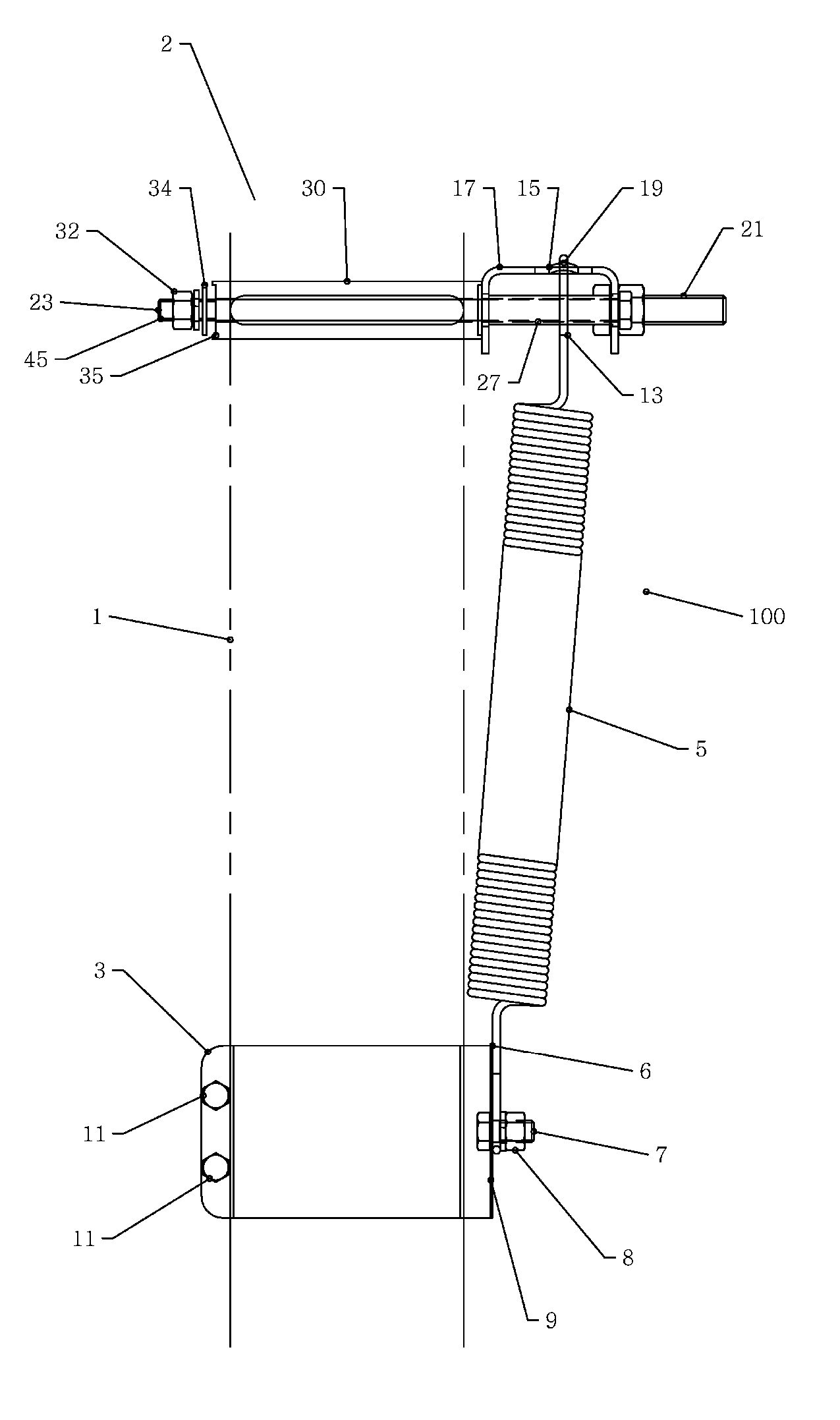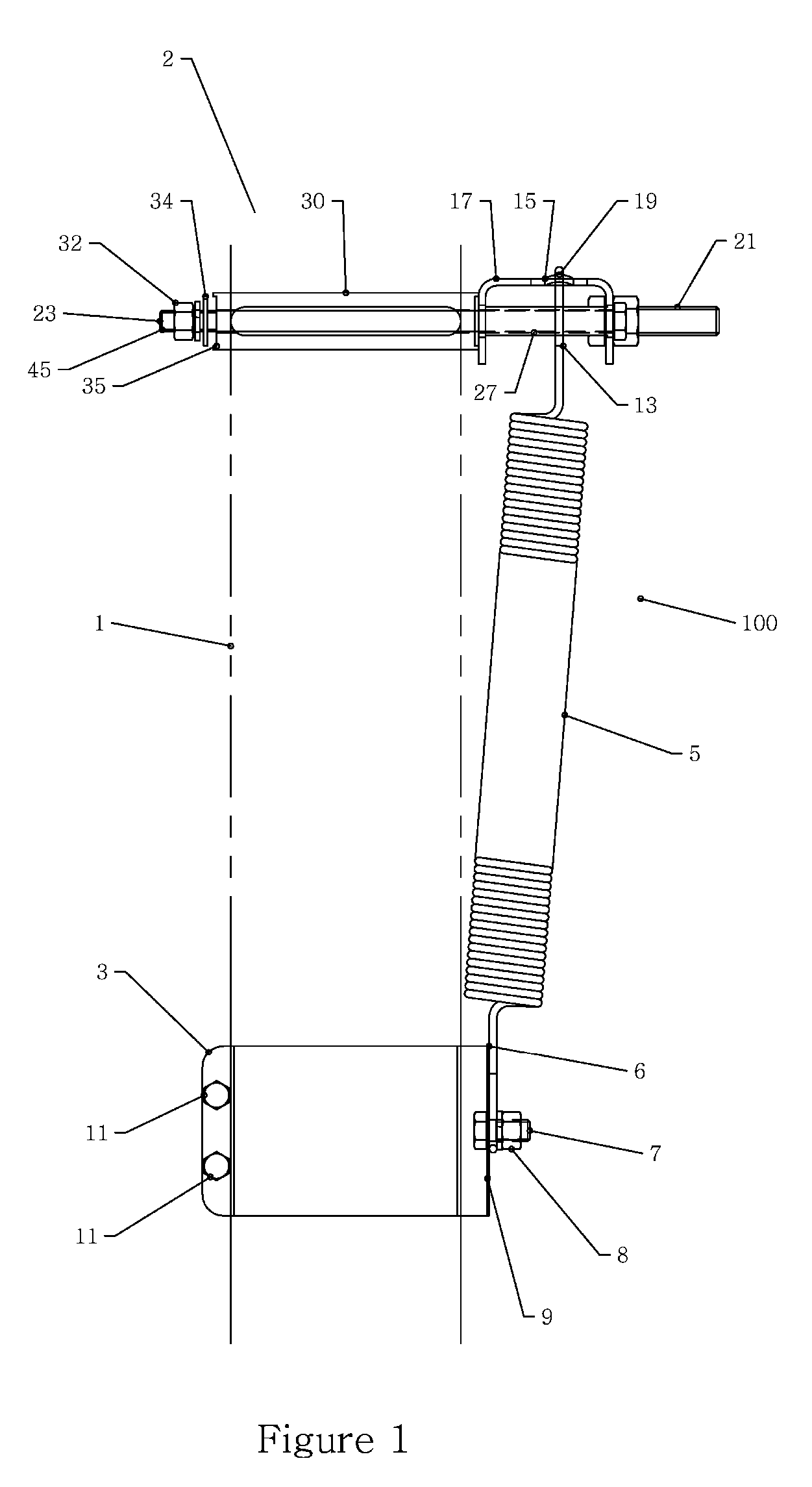Hanger System for Rigid Lines
a technology of rigid lines and hanging rods, which is applied in the direction of kitchen equipment, domestic applications, and stands/trestles, etc., can solve the problems of degraded electrical performance, deformation of the waveguide, and further lateral force on the waveguide,
- Summary
- Abstract
- Description
- Claims
- Application Information
AI Technical Summary
Benefits of technology
Problems solved by technology
Method used
Image
Examples
Embodiment Construction
[0015] As shown in FIG. 1, a rigid line hanger 100 according to a first embodiment of the invention supports a rigid line 1 via a guide clamp assembly 2 coupled to a support clamp 3 by a spring 5. The spring 5 is secured at a first end 6 to the support clamp 3 via, for example, a spring bolt 7 and spring nut 8 connection to a spine 9 of the support clamp 3. The support clamp 3 may be secured to the rigid line 1 by one or more support clamp bolt(s) 11. Alternatively, the support clamp 3 may be any form of secure clamp, bracket or an existing connection point on the rigid line 1 for the first end of the spring 5.
[0016] The spring 5 is attached at a second end 13 to the guide clamp assembly 2. The spring 5 attachment to the guide clamp assembly 2 may be, for example, via a hook formed in the second end 13 of the spring 5 that is looped through a pair of spring hole(s) 15 in a bracket 17. A spring mating surface 19 between the spring holes 15 may be machined or stamped to present a sha...
PUM
 Login to View More
Login to View More Abstract
Description
Claims
Application Information
 Login to View More
Login to View More - R&D
- Intellectual Property
- Life Sciences
- Materials
- Tech Scout
- Unparalleled Data Quality
- Higher Quality Content
- 60% Fewer Hallucinations
Browse by: Latest US Patents, China's latest patents, Technical Efficacy Thesaurus, Application Domain, Technology Topic, Popular Technical Reports.
© 2025 PatSnap. All rights reserved.Legal|Privacy policy|Modern Slavery Act Transparency Statement|Sitemap|About US| Contact US: help@patsnap.com



